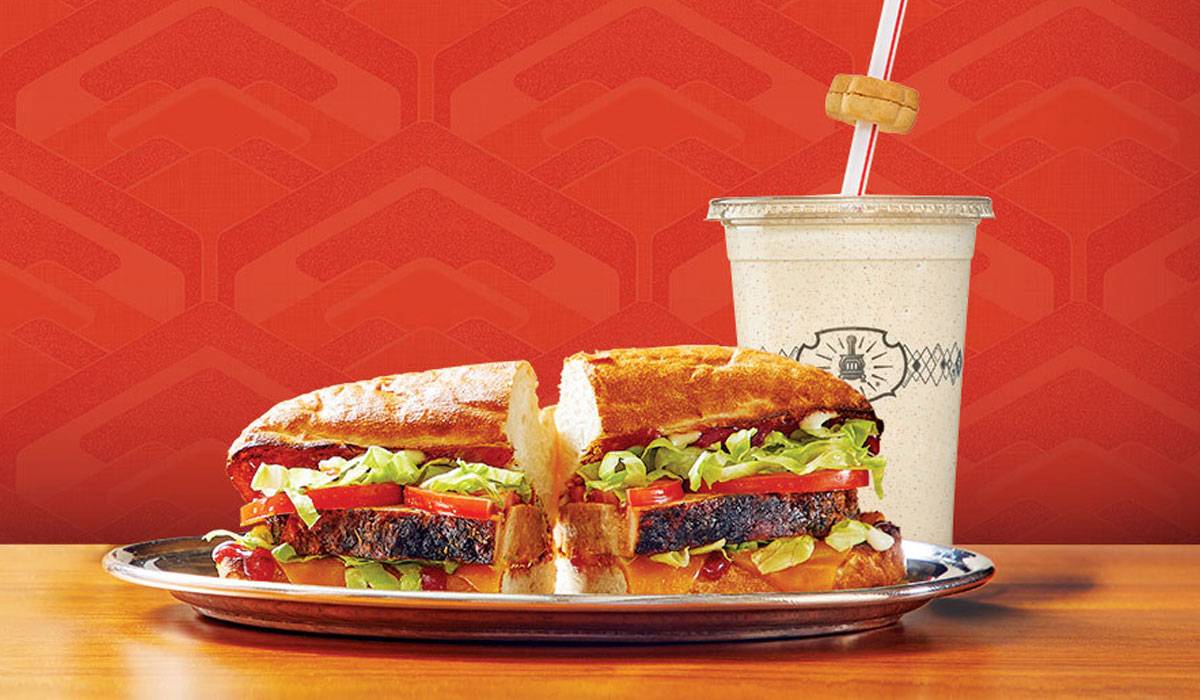Potbelly is considering permanently shuttering up to 100 corporate units as same-store sales dropped nearly 70 percent in March.
CFO Steven Cirulis said the closures are intended to strengthen the business coming out of the crisis. The potential stores were not profitable pre-COVID, and have been challenged even more amid the pandemic. Cirulis said around 90 percent of the units prioritized for closure have been previously impaired.
There are currently 36 temporary closures, a list that overlaps highly with stores being considered for permanent shutdown.
Potbelly ended Q1 with 473 units (427 company-owned, 46 franchises), meaning as much as 21 percent of the sandwich chain’s footprint could be cut when the pandemic subsides.
Like many restaurants, Potbelly’s Q1 momentum was effectively halted by the coronavirus. Comp sales grew 2.5 percent and 4.1 percent in January and February, respectively. Both were ahead of projections, and it appeared the brand was headed toward its first positive quarter since Q4 2016. But with the onset of the pandemic, same-store sales slid 68 percent in March.
“We immediately went from a majority dine-in business to one that was almost completely off-premises,” Cirulis said during the brand’s Q1 review.
The brand ended Q1 with a 10.1 percent decrease at company-run locations. Average check grew by 5.1 percent and traffic slid 14.4 percent. Total first-quarter revenue dropped from $98.1 million in 2019 to $87.6 million.
Here’s how comps at company-run stores have trended:
- Q1 2020: –10.1 percent
- Q4 2019: –0.1 percent
- Q3 2019: –3 percent
- Q2 2019: –4 percent
- Q1 2019: –4.7 percent
- Q4 2018: –1.7 percent
- Q3 2018: –0.2 percent
- Q2 2018: –0.2 percent
- Q1 2018: –3.6 percent
- Q4 2017: –2.4 percent
- Q3 2017: –4.8 percent
- Q2 2017: –4.9 percent
- Q1 2017: –3.1 percent
As a result, Potbelly furloughed more than a third of its corporate employees and cut salaries for all executives and corporate workers by 25 percent. The board deferred compensation for the first half of 2020. The company suspended merit increases, promotions, bonuses, and its 401(k) match. It also pulled back on advertising, limited capital expenditures to maintenance and safety, and negotiated leases with landlords.
As units have adjusted to the new normal, comps have lifted week to week. In the first week of May, comps were down 45 percent. CEO Alan Johnson said that when mandates were relaxed in Texas, the brand saw a 10 to 15 percentage point improvement in same-store sales in those markets. A similar uptick was seen in Phoenix.
“The good news is the dine-in business is not dead,” Johnson said. “People still want to come to Potbelly and enjoy the environment albeit in those markets we are still restricted as to occupancy.”
Several restaurant operators have expressed concern about furloughed workers refusing to return to work as dining rooms reopen, especially with the enhanced unemployment benefits.
But Johnson noted Potbelly hasn’t experienced that sentiment from its employees.
“There’s more people that want to come back than we actually can provide,” Johnson said. “That’s important because otherwise we’d have to retrain people. In today’s environment that would be difficult to do at best. … We have to build trust with our employees. That’s why we have mandated that all of our employees wear gloves, wear masks as part of the uniform.”
The improvement in sales is primarily due to Potbelly’s shift toward digital, which began pre-COVID. The channel went from mixing 10.5 percent in January and February 2019 to 14.8 percent in the same period this year. Since the second week of April, digital has mixed 51.6 percent.
“We are encouraged by the recent momentum, but still expect depressed sales for some time before we once again grow,” Cirulis said.
Potbelly offers takeout, delivery, drive-thru (at 65 locations) and curbside pickup, which it added in the first quarter. Johnson said Potbelly added pickup shelves inside stores and brought on Uber Eats as a third-party delivery partner.
In an effort to provide more convenience, the brand formed Potbelly Pantry to sell grocery store items directly to the customer. The company went from ideation to launch in 15 days. Johnson said customers have used Potbelly’s cookie dough to bake more than 73,000 cookies in two weeks.
“While the pandemic has changed many things for us, we remain confident that the strategic foundation we were building prior to COVID-19 is as applicable in our recovery and beyond,” Johnson said.
In March, Potbelly launched its growth-oriented strategy Project Aurora in 52 shops across multiple markets. Johnson said the company saw encouraging results, but it encountered the first cases of COVID-19 in these test markets within only a few days of launch.
With the added burden of closing dining rooms, Potbelly decided to pause the tests. Some elements of Aurora are still in play, like the consolidated menu and a move from discount-based promotions to product-based promotions.
Cirulis said Potbelly has been operating under “an extremely conservative cash preservation position.” He didn’t give specific numbers, but he did note that Potbelly’s cash burn rate has dropped 60 percent since mid-March. The brand also drew down its $40 million credit facility as a precaution. Potbelly returned a $10 million Paycheck Protection Program loan in April after new guidance from the federal government.
The CFO also added that the brand hasn’t experienced any issues with its supply chain.
“We’re comfortable with where we are, but we’re cautious as we think about how things might evolve,” Cirulis said.








